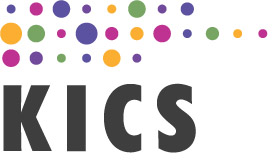Now 78 visitors
Today:721 Yesterday:1278
Total: 1571
193S 45P 12R
2025-10-17, Week 42 |
| TACT Journal Page |
| Call for Paper |
| Author Homepage |
| Paper Procedure |
| Paper Submission |
| Registration |
| Welcome Message |
| Statistics |
| Committee |
| Paper Archives |
| Outstanding Papers |
| Author Homepage |
| - Paper Procedure |
| - Journal Procedure |
| - Presentation Tips |
|
| Proceedings |
| Program with Papers |
| Plenary Session |
| Tutorial Session |
|
| Presentation Assistant |
| Hotel & Travel Info |
| About Korea |
| Accommodation |
| Transportation |
| VISA |
| Other Infomation |
|
| Photo Gallery |
| FAQ |
| Member Login |
| Scheduler Login |
| Seminar |
| Archives Login |
|
| Sponsors |

|

|

|

|

|

|

|

|

|

|
|
|
|
|
| Save Q&A |
 |
* Edit or answer any Q&A by selecting Q&A number Hyper Link below + Write button (Save)
|
 ICACT20250172 Question.1
ICACT20250172 Question.1
Questioner: zzm80164@pcnw3.ee.ncku.edu.tw 2025-02-09 오후 9:02:06 |
 ICACT20250172 Answer.1 ICACT20250172 Answer.1
Answer by Auhor lsqbit@163.com 2025-02-09 오후 9:02:06
Chrome  Click!! Click!! |
| In the fourth step, it is stated that a node is removed or a backup cluster head takes over after three consecutive missed 'hello' messages. Is there any theoretical or empirical basis for selecting three as the threshold, and how was this value determined?
|
The threshold of missing the "hello" message three times in a row is a balanced value derived from considering factors like fault tolerance, network stability, and system response speed. This threshold not only accommodates certain network jitter and latency but also ensures that the system can promptly detect and respond to actual node failures. Many distributed protocols, such as the Raft protocol, have validated that three lost messages are a balanced setting that is neither too sensitive nor too loose, effectively managing node failures and cluster stability. |
 ICACT20250172 Question.2
ICACT20250172 Question.2
Questioner: ammarnabil23050@gmail.com 2025-02-17 오전 10:28:43 |
 ICACT20250172 Answer.2 ICACT20250172 Answer.2
Answer by Auhor lsqbit@163.com 2025-02-17 오전 10:28:43
Chrome  Click!! Click!! |
| How does your anti-jamming weighted clustering algorithm help reduce the impact of interference between clusters, and what challenges does it address in this process? |
In the initial cluster formation stage of the proposed ianti-jamming weighted clustering algorithm, unreasonable node clustering may result in suboptimal clustering results and increased interference between clusters. To address this, the K-means++ algorithm is employed for the initial cluster formation. This algorithm considers the distances between nodes when selecting initial cluster centers, ensuring that the centroids are more widely dispersed. As a result, the clusters are more evenly distributed, which helps reduce interference between them. |
 ICACT20250172 Question.6
ICACT20250172 Question.6
Questioner: 3120220183@bit.edu.cn 2025-02-19 오전 11:30:15 |
 ICACT20250172 Answer.6 ICACT20250172 Answer.6
Answer by Auhor lsqbit@163.com 2025-02-19 오전 11:30:15
Chrome  Click!! Click!! |
| Why choose the error rate of hello message in the external interference factor? Can I choose other data packets for transmission? |
Because hello messages are data that each node needs to periodically broadcast during the clustering process, other data cannot be determined to be sent by every node. So choosing hello message has a certain degree of fairness. |
| |






